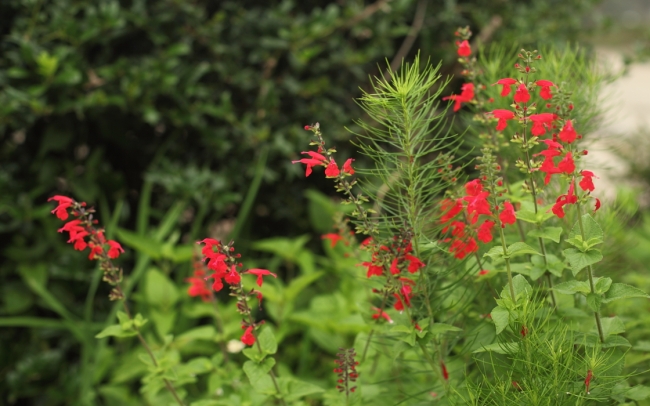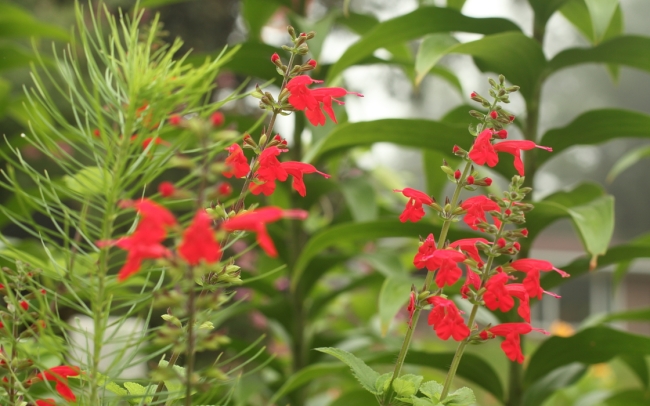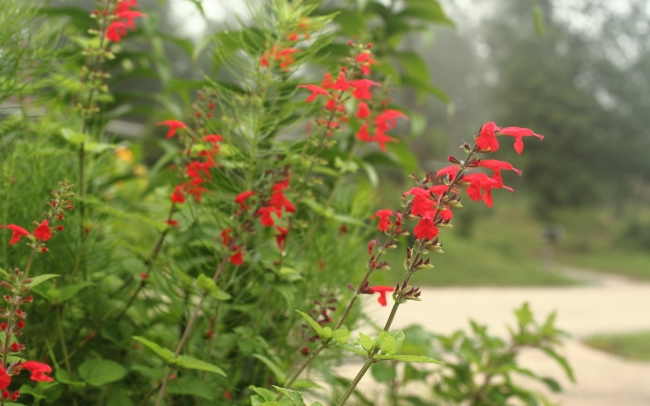I love reading about or discovering for myself things that experienced gardeners know but don’t talk about or what isn’t found in most garden books. The best garden books are those that share these insights. On a tour at Birmingham Botanical Gardens‘ Kaul Wildflower Garden, I learned that the anthers of mountain laurel snap up, projecting pollen when they are touched. Or, on a plant identification class at Auburn, I learned that the crushed leaves of the Alabama croton (Croton alabamensis) smell like apples. Isn’t it fun to learn these things for the first time?
The last time I grew scarlet sage (Salvia coccinea), I was a teenager and, like most teenagers, not much of a morning person. Since I’m in my twenties now and have work to do, I get up early, which has allowed me to notice things in the garden I wasn’t awake to see when I was younger. Scarlet sage looks best in the morning. Not just best, but spectacular. Is there a more vibrant red to be seen among the banished children of Eve?
By mid-afternoon, whatever flowers haven’t been ravished by bees and hummingbirds look paler and tired under the heat of the summer sun. By sunset, most of them have fallen to the ground.
For this reason, I would plant scarlet sage where it can be admired over coffee and breakfast, where one can sit and recollect while watching the hummingbirds, or next to the spot where one stretches after a run.
Scarlet sage has the usual square stems and opposite leaves of mint family plants. The leaves are heart-shaped, with short petioles, and pubescent. Mine are 2-3 feet tall. Deadheading of the spent inflorescences results in continuous production of new flowers.


